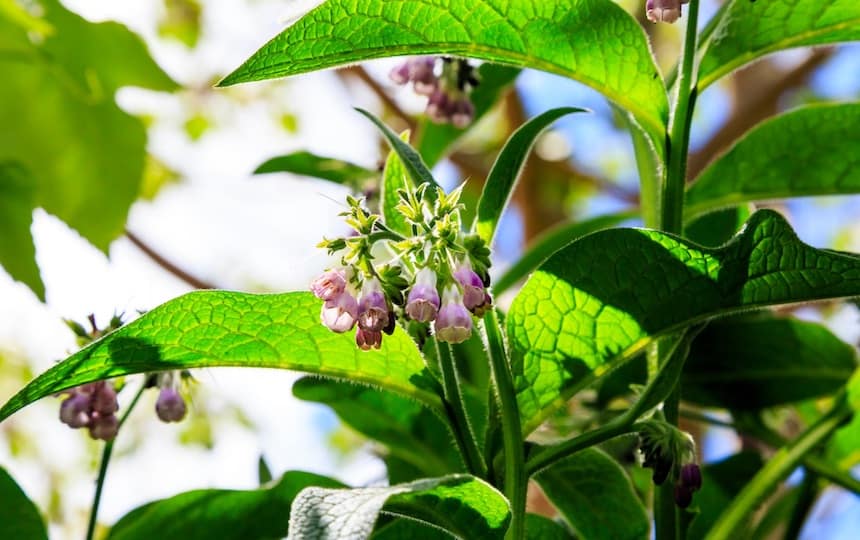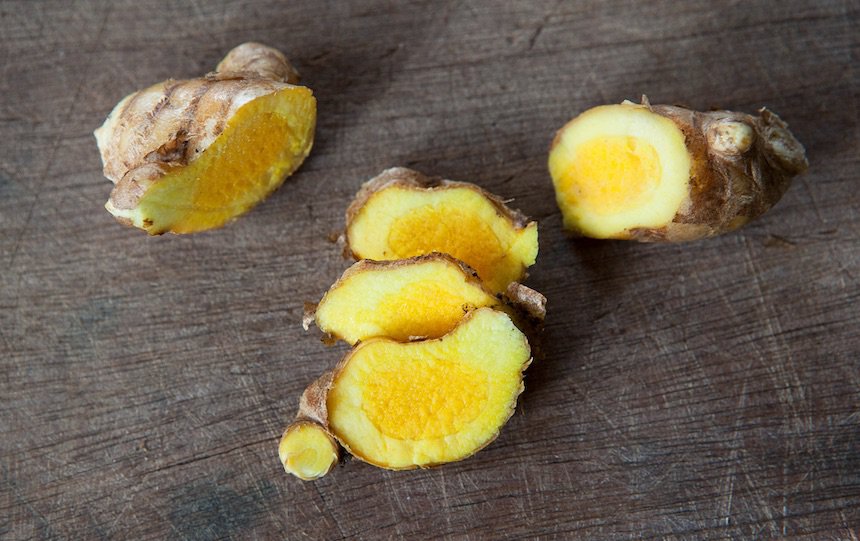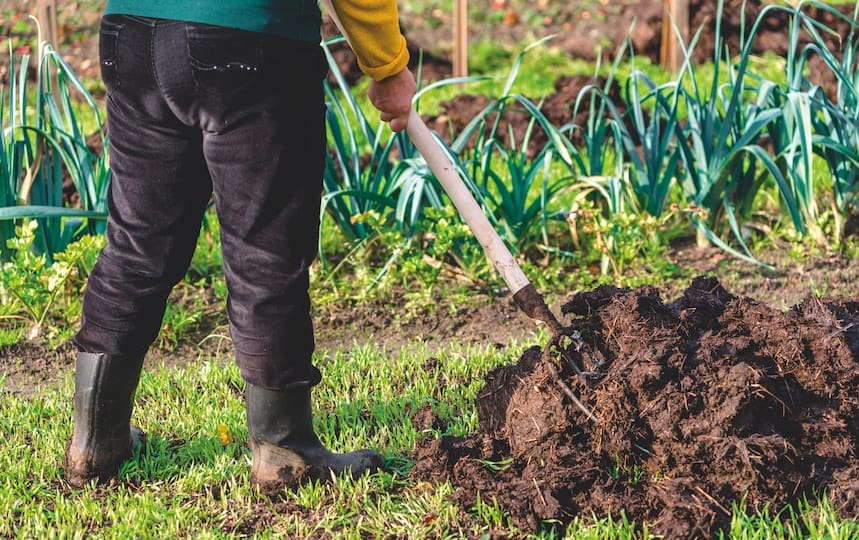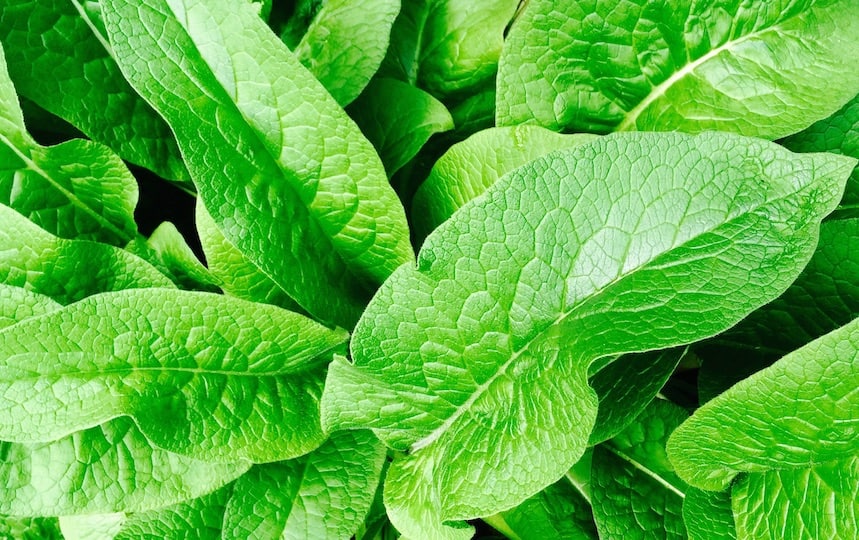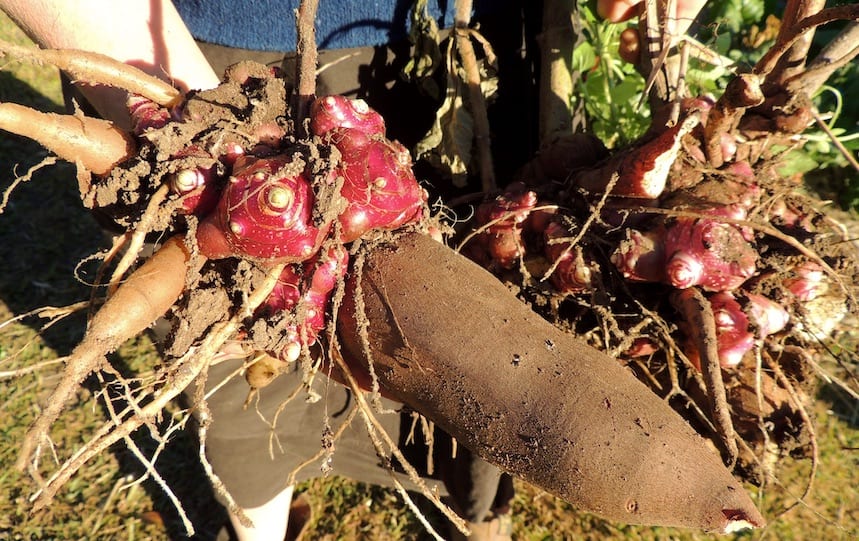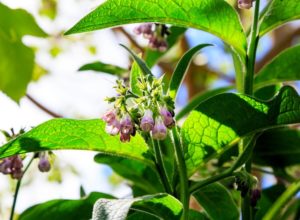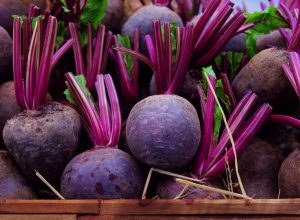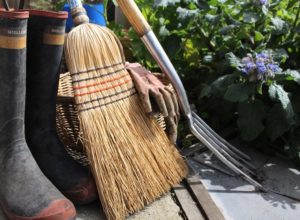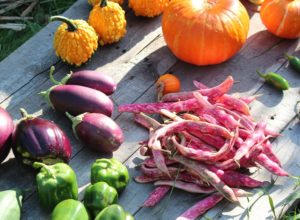Hello winter! Our June Garden Guides are here, with all you need to know about what to do in your garden this time of year, depending on which climate zone you’re in.
Cool Temperate June Garden Guides
by Christina Giudici of FIMBY
What to plant?
As we approach the shortest day, our focus for planting in the garden shifts from annual veggies to perennials. Rhubarb, asparagus, Jerusalem artichokes, globe artichokes, chives, garlic chives, horseradish, potato onions and shallots can all be lifted, divided and replanted in the next two months.
Fruit and berries are also perennials of course, and deciduous trees and cane fruit are best planted bare rooted in their winter dormancy.
Some annuals are still well equipped to germinate and grow (slowly) in cold winter soil. Spring onions, radishes, broad beans, peas and English spinach are still good for filling gaps.
Maintenance
When planting fruit trees and berries in winter, it’s a good idea not to put too much food (eg. compost or manure) in the planting hole. We want the new plants to send their roots out widely, seeking moisture and nutrients. And compost can act like a big sponge, soaking up and holding water in the hole and leading to a lack of oxygen for the growing roots.
The enemy of young fruit trees (besides whipper snippers) is grass. So DO use copious amounts of compost, old manure, spoiled hay, or any other good feeding mulch material on the surface around newly planted trees and berries.
You can soak newspaper or cardboard in a wheelbarrow of water, and put that down over any grass around the planting hole. Then cover with plenty of mulch, thick as you like.
If you’ve planted trees for espaliering or fan pruning against a wall, it’s a good idea to sheet mulch the whole strip between the trees with this layering technique. You can grow herbs, ground covers like nasturtiums, strawberries, even big crops of leafy greens in the mulch layer for a few years while the trees are still small.
Pests and disease
Don’t let mulch pile up against the trunk or stem of newly planted trees, as it can encourage collar rot. Keep a little gap for airflow. The birds might scratch the mulch around, but you’ll just have to re-arrange it as you do your regular inspections.
Pick off any mummified fruit from apricots or other stone fruit trees. These mummies contain the spores of fungus like brown rot, which will reinfect fruit in spring and early summer. Good garden hygiene means that these should be taken right away from the garden, and bagged and binned.
Harvest and preserve
If you’re dividing rhubarb you’ll be pulling off lots of larger leaves so you can see what’s going on with the crowns. Having a few kilos of rhubarb stems sitting on your kitchen sink is a great problem to have! I make rhubarb and vanilla bean jam – it’s a fave. Or my other favourite use is to make rhubarb fizz or rhubarb syrup.
For syrup chop the stems and cook with a bit of water till soft. Then strain through fine cheesecloth, measure the volume of syrup, and add an equal volume of sugar.
Cook until the sugar is dissolved and the syrup has become just a bit viscous. Bottle, and keep in the fridge for a few months, or process in a hot water batch to keep in the cupboard.
Rhubarb syrup is delicious as a cordial with soda water, or drizzled on ice cream, or added to white rum, lime, mint and soda to make a rhubarb mojito!
Featured permaculture principle #6: Produce no waste
Growing your own food at home presents so many opportunities to turn a potential waste stream into the inputs for making things that we need.
- Compost, worms, chickens – the obvious systems for recycling your household food scraps and garden waste into soil conditioner and eggs.
- Animal systems, such as chickens, create a lot of “waste” as manure, but you can capture that with deep litter systems using straw, hay, sawdust, charcoal, etc and end up with perfect inputs for some large scale hot composting.
- It’s not all about recycling though. The principle also prompts us to think of ways to avoid producing a waste stream in the first place. Take your own bags and baskets shopping. Find producers and suppliers who use and support recycling of containers and packaging.
- Have a “scraps” cook-up once a week where you find creative ways to use up all the forlorn bits of leftover food in the fridge or starting-to-get-soft fruit or veggies on the bench.
- I have a friend who collects all the scruffy bits of broken weetbix from the bottom of the packet when its finished. She stores these in an airtight container, and has weighed a whole weetbix so she knows how many grams one weighs. Then when making biscuits that call for a crushed weetbix, she just measures out the required weight of scruff! Genius.
Mediterranean June Garden Guide
by Nadja Osterstock of Nadja’s Garden
Harvesting
We’re now coming to the end of the basil and chillies, and the rocket is really so enormous and peppery that the only reason not to pull it out is that it’s about to self-seed and start the next crop for winter.
Chillies, both red and green, are going into ziplock bags in the freezer, as can kaffir lime leaves when giving the tree a tidy-up. All set for winter Thai curries then!
Mandarins, oranges, limes and lemons are plentiful and a few late-ripening passionfruit and silk bananas are still turning up. Hens are on strike though, so eggs are scarce – luckily bananas make a good substitute to bind cake mix.
Planting
As the days are finally cooling down it’s tempting to rug up inside with a teapot, but gardening really is more warming.
It’s time to think about planting bare-rooted deciduous fruit trees, and transplanting existing trees once they are fully dormant. Soil preparations make for a warming workout: prepare the hole wider than it is deep, loosen the soil below, add plenty of gypsum for drainage and do a drainage test – especially if you’re on clay soil, and even more so if you’re planting trees that are sensitive to wet feet.
Add good compost – but particularly to the backfill soil and around and beyond the drip-line of the tree, where most of the feeder roots will grow.
Native trees can now be planted on revegetation sites, but may need strong protection from browsing kangaroos, sheep, deer, rabbits and hares as well as wind. Weed mats or regular weeding will also help them get off to a strong start.
Peas have begun cropping, and successive plantings will keep them coming over the cooler months. Out with the soursobs and in with some cool season veggies to replace them, eg. artichoke suckers, asparagus crowns, broad beans, carrot seeds, broccoli, cabbage, cauliflower, celeriac, celery, kale, leeks, lettuce, radish, rocket, silverbeet, spinach, swede, turnip and watercress, seed potatoes, garlic cloves and strawberry runners.
Replenish soil with well-rotted compost, manures, blood and bone, etc as we go, aerate beds gently by lifting with a fork without overturning the soil, and add gypsum to break up heavy clay, including an annual dose around fruit trees, watered in with a good soak. Flowering bulbs could also be added here.
Maintenance
Old mulch can now be composted along with the autumn leaves. If slaters have been breeding in mulch and presenting a threat to seedlings, then consider moving old mulch out to a lower-intensity zone (eg. orchard) or letting chooks pick through it before composting.
Bare dark soil will absorb more warmth from winter sun – but re-mulch in spring before the soil has a chance to dry out.
Featured Permaculture principle: Produce no Waste
Winter can bring a surplus of orange peels, which are slow to break down in compost and become a bit of a nuisance. So, if you are planting out tender young seedlings, try putting half-orange shells down on the garden bed surface, with a little gap under one side.
It’s a tempting shelter for slugs and millipedes, so you can gather them up and dispose of them early in the morning (to chooks or green bin). Another option is to dry the orange peels in front of the fire/heater or in a cooling oven after cooking, and when fully dry, use them as aromatic kindling.
If you’re composting them anyway, just break them up into tiny pieces first, make sure they are mixed in well with other ingredients and that they don’t make up a large proportion of the mix.
Subtropical June Garden Guide
by Morag Gamble of Our Permaculture Life
I love being out in the garden at this time of year, it is so much cooler; I can even be out in the middle of the day. Here in the subtropics, the arrival of the cooler weather sees a big change – from tropical plants to cooler climate plants and from wild abundance to more subdued growth.
The diverse polycultural permaculture garden is forever changing, adapting and evolving. It’s amazing to sit back and watch as the summer vigorous plants such as Turmeric, QLD Arrowroot, Yacon and Cassava start to die back ready for harvest, and the cool season plants begin self-seeding everywhere – the green mustard spinaches, the giant red mustard spinach, cherry tomatoes, coriander.
My rosellas are still flowering. I am collecting and drying what may be my last batch for the season (this makes a wonderful tea). Unfortunately, the leaves are almost gone, I had been enjoying them as a lemony spinach in salads and stir fries.
What to plant?
Winter in the subtropics is our window to grow typically familiar vegetables. It’s a great time here to plant:
- salad greens (lettuce, celery, parsley)
- peas (climbing peas, snow peas)
- brassicas (cauliflower, cabbage, broccoli, kohl rabi)
- leafy greens (kale, spinach, silverbeet, mustard greens)
- onions (bulb, welsh onion, leeks) and
- root crops (carrot, daikon, beetroot, radish, parsnip, turnip).
- flowers (calendula)
I still prefer the open hearted vegetables, for example kale rather than cabbage, because there is more chance of success (without major pest management intervention) because you can start harvesting some small leaves from just a few weeks and easily see what’s happening at the base of the plant.
Plant selection has huge bearing on how successful your crop will be in the subtropics, particularly if you want to engage in a peaceful way of gardening, rather than a war with pests.
In areas without frost it’s also possible to grow:
- beans
- nightshades (tomatoes, capsicum, eggplants, potatoes) as well as
- pumpkin, zucchini
- garlic
- okra
- sweet potato
Maintenance
In amongst the perennial edibles and self-seeding vegetables, I have been renewing pockets in my garden beds for planting out our cool season crops and fresh salad greens.
Winter is an important time to replenish the soil in the subtropics, particularly after the rapid growth of the summer vigorous plants and the typical leaching from heavy summer rains.
It’s good to have as many types of compost as possible to capture all the abundant subtropical growth and return it to the soil.
Throughout the garden I have many ongoing compost systems to help keep the fertility up – worm towers, roving compost bins, bays. I’ve moved our bins to new locations, spread out the compost and made new beds, and I have given all the worm towers a super feed – with an extra boost of coffee grounds.
To open up the soil ready for these coming rains, I have been going around forking where I can, hoping to catch as much water as I can in the soil. I have also been scattering handfuls of biochar which helps to hold nutrients and moisture in the soil, and creates habitat for microbiological life, and top-dressing all my mulch. So much gets taken into the soil over the summer growth period.
During the warmer months I am growing a lot of my own mulch. Before the comfrey, canna, lemongrass and other summer plants lose their leaves or contract for the winter, I gather as much leaf material as I can to make new compost piles, make liquid fertilisers, use as chop and drop mulch, and to add lots of organic matter into new no-dig beds.
If you are in a non-frost areas, you can keep sowing cool season green manures – fava beans, fenugreek, lupins, oats, subclover, and woolly pod vetch. Great for adding nitrogen and organic matter.
It’s a good time to clean up any fallen fruit, cut back and mulch the abundant summer growth, prune the deciduous plants (eg. mulberry), check for gall wasp on citrus (prune and burn).
Harvest
Three of easiest plants to grow in the subtropics are ready to harvest and use.
It’s turmeric (Curcuma longa) time. The tops are all browning and the rhizomes are ready to start digging up. A great way to store a turmeric haul is in a tub of moist sand and keep in a protected place (mine goes under the verandah). I just take what I need for the week into the house. Leave some in the ground for next season.
Yacon (Smallanthus sonchifolius, Peruvian Ground Apple) is flowering indicating that the roots are forming below – great big sweet, crunchy tubers are swelling up, pushing up great mounds in the soil.
Now and when as the tops start dying back, I gently remove the roots from the ground. You’ve got to be careful. If the skin is broken they rot quickly. It’s a good idea to dry them out a bit first before finding a cool storage place for them. They are great eaten fresh, grated into salad, or added to a savoury dish.
Making yacon syrup (a suitable sugar alternative for diabetics) may be a good way of preserving this fruit. Leave some of the crowns in the garden ready for next growing season.
Cassava (Manihot esculentais) ready to harvest – harvested when the leaves begin to yellow and fall. They are eaten boiled, fried, baked and made into flour. The refined starch from the tubers, known as tapioca pearls, is used in soups, puddings and dumplings. The roots store well.
Featured permaculture principle #6: Produce no waste
This principle is so appropriate to our work in subtropical gardens right now. By getting active with the composting and mulching of the summer abundance, we are valuing and making great use of the natural exuberance of plant growth and using it to replenish the the soil.
Nothing need go to waste. Everything biodegradable can be returned to the soil even in simple systems through worm farms, chickens, and compost systems.
It’s great to see institutions as large as the University of the Sunshine Coast collecting all of it’s biodegradable waste and processing it through a large composter, including all the takeaway food plates and cups. In the new community garden on this Sunshine Coast campus we use this compost, as well as coffee grounds from all the cafes.
It is estimated that still over half of garden and waste is thrown into landfill. There’s a great opportunity to get more active with home composting, community composting and municipal composting – it makes the world of difference in our gardens, communities and in the environment.
Some people admit to me at community events that they don’t collect food scraps because of the smell (especially in our warmer months).
Sprinkling a little bokashi powder into your collection bucket (with a lid) every time you add some scraps makes it smell sweet and also helps the scraps to break down well once added to the compost bin or dug into the soil. You don’t need the bokashi bucket, just the powder.

